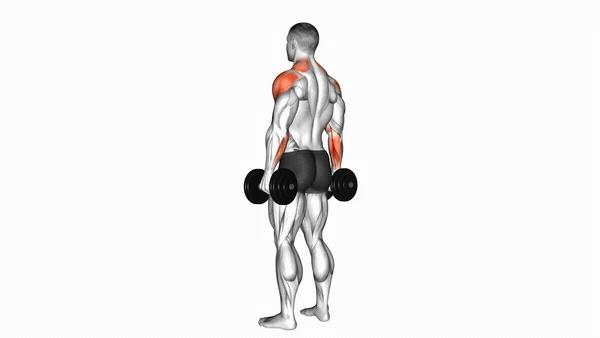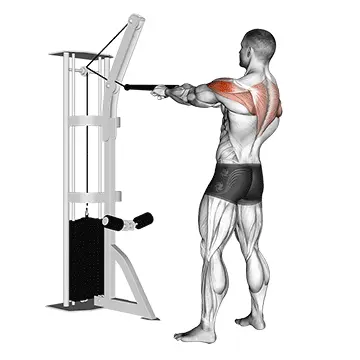Rear Delt Fly

Muscles Involved
The rear delt fly primarily targets the posterior deltoids, which are crucial for shoulder stability and overall shoulder aesthetics. Additionally, this exercise engages several secondary muscles, including the trapezius, rhomboids, and infraspinatus. The engagement of these muscles helps improve upper back strength and posture, contributing to a balanced upper body development.
Top Mistakes
- Incorrect posture: Arching the back or rounding the shoulders can lead to strain and diminish the effectiveness of the exercise.
- Using too much weight: Lifting heavy can compromise form, leading to ineffective workouts and potential injury.
- Inadequate range of motion: Stopping short during the lift limits muscle engagement and reduces the exercise benefits.
- Neglecting the tempo: Performing the movement too quickly can result in momentum overshadowing muscle work.
Execution Tips
To perform the rear delt fly correctly, begin by selecting an appropriate weight that allows you to maintain control throughout the movement. Position your body by either leaning forward from a standing position with feet shoulder-width apart or lying flat on a bench. With a dumbbell in each hand, extend your arms down, allowing them to hang naturally. Keep a slight bend in your elbows as you raise your arms out to the side, focusing on squeezing your shoulder blades together at the top of the movement. Lower the weights slowly back to the start, controlling the descent. Prioritize maintaining a neutral spine to avoid strain and promote effective muscle targeting.
Workouts
The rear delt fly can be seamlessly integrated into a shoulder or upper back workout routine. For beginners, start with 3 sets of 10-15 repetitions, ensuring that you maintain proper form throughout. As your strength improves, consider increasing the weight while keeping the reps consistent. Pair this exercise with complementary movements such as bent-over rows, face pulls, or shoulder presses to create a comprehensive routine that enhances overall upper body strength.
Conclusion
The rear delt fly is an invaluable exercise for those looking to improve shoulder stability, posture, and aesthetics. By targeting the often neglected rear deltoids and upper back muscles, this exercise plays a vital role in achieving a balanced physique and enhancing overall upper body functionality. Incorporate it into your routine to boost your strength, correct imbalances, and work towards a more defined back and shoulders.



